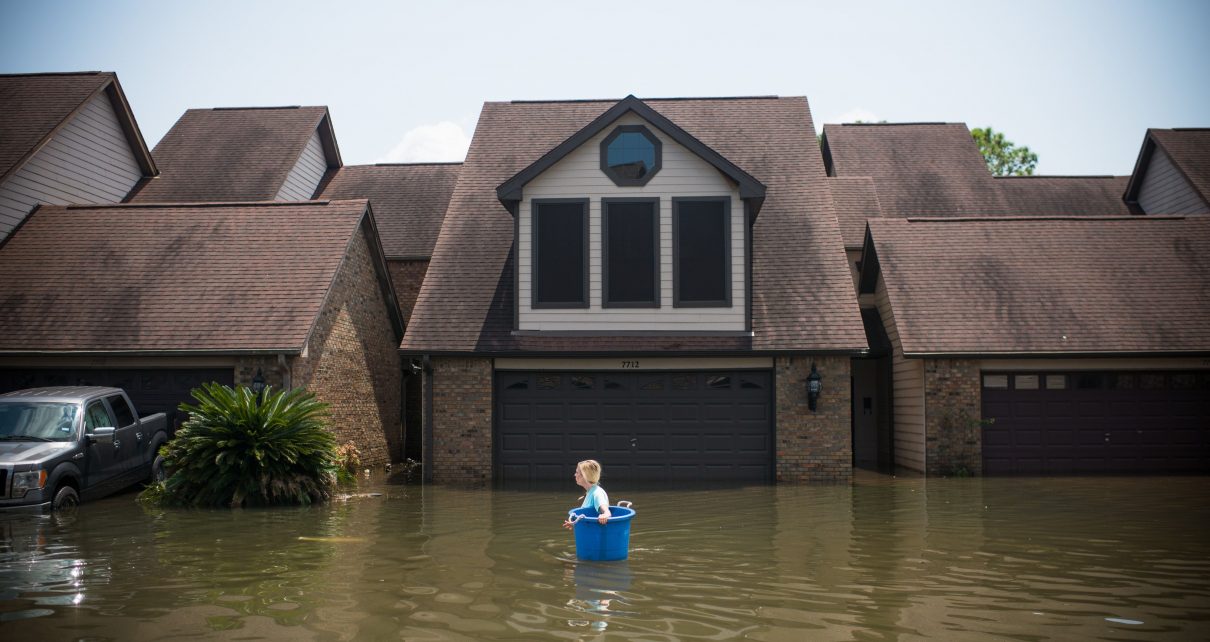The U.S. could save more than $1 trillion over the long term by removing roughly 1 million homes from flood-prone areas and relocating residents to higher ground, according to a massive new study funded by the government.
The 658-page report suggests that modest government programs to buy and raze houses in flood zones should be greatly expanded to reduce looming losses driven in part by climate change.
Buyout programs run by the Federal Emergency Management Agency and the states have struggled because of funding limits, the reluctance of homeowners to move and the substantial paperwork required to relocate residents.
The report describes buyout programs as a key strategy for dealing with increased coastal and riverine flooding in part caused by rising temperatures and intensifying downpours. In a typical buyout, a government agency pays a cluster of homeowners to relocate and then moves or demolishes the houses. Over time, that would reduce costs to public disaster programs.
“Flooding is the country’s biggest risk, and we just have all of these homes in the floodplain that keep getting repetitive losses,” said Keith Porter, one of the study’s authors and a structural engineering researcher at the University of Colorado. “We never should have been building in the floodplain in the first place. It’s time to solve that problem.”
A massive nationwide buyout program would be expensive. Removing 1 million flood-prone homes would cost $180 billion, says the report, which received funding from FEMA and the Department of Housing and Urban Development.
But that spending would generate $1.16 trillion in savings over a 100-year period, mostly by averting property damage that is typically paid for by federally subsidized flood insurance or other disaster programs. The buyouts also would reduce drowning deaths during floods.
“The study provides irrefutable proof that hazard mitigation efforts not only save lives but considerable amounts of money, too,” said Joel Scata, a climate lawyer with the Natural Resources Defense Council. He was not involved in the report.
Last year, the NRDC analyzed FEMA’s buyouts and said the program’s complexity deterred many homeowners from selling their property. FEMA has bought 43,000 properties since the late 1980s, and its buyout efforts “struggle to meet existing need,” said the analysis.
The new report addressing buyouts was released last week by the National Institute of Building Sciences, a nonprofit research group created by Congress in the 1970s to provide recommendations for safer and more affordable development. Lawmakers and regulators often cite the institute’s findings that show long-term cost savings from hazard mitigation.
The latest report looks for the first time at existing buildings. It analyzes ways to reduce their vulnerability to floods, hurricanes, earthquakes and wildfires and how to encourage the private sector to invest in hazard mitigation.
“Public-sector money is not enough to prepare our country for hazards. We need to bring in private investment,” said Jiqiu Yuan, executive director of the building institute’s Multi-Hazard Mitigation and Building Seismic Safety Council.
The institute report quantifies the potential savings from several measures to protect houses against natural hazards.
- Nearly 3 million homes along the Gulf and Atlantic coasts could be fortified against hurricane winds with stronger roofs and tie-downs for manufactured homes at a cost of $218 million. The improvements would generate $913 million in long-term savings.
- Nearly 2.5 million homes in wildfire-prone areas could be made more fire resistant by installing tempered-glass windows, automatic sprinklers and fire-rated doors at a cost of $240 billion. The improvements would generate $430 billion in long-term savings.
- Millions of homes in earthquake zones could be strengthened by installing steel columns in multifamily homes and securing bookcases, television sets and water heaters. The measures would cost $235 million and generate $1 trillion in benefits, mostly in California.
In total, $2.2 trillion could be saved by spending $520 billion, the report says.
The biggest savings by far involve avoiding flood damage, which occurs across the U.S., unlike other hazards that are regional.
The study identified several measures other than buyouts to reduce flood damage: elevating homes, floodproofing basements, and moving furnaces and water heaters out of basements.
But none of those measures would be nearly as cost-effective as moving homes out of flood zones, because they leave the homes in areas where they are likely to be flooded again.
“Buyouts represent permanent flood mitigation,” the report states.
A large-scale buyout program, with a projected $1.16 trillion in savings and $180 billion in upfront costs, would have a favorable cost-benefit ratio—about $6.50 in savings for every $1 spent.
Ratios for other flood-related measures were less favorable, generating about $2 in savings for every $1 spent.
The ratio for buyouts is similar to other hazard mitigation programs analyzed by the building institute over the years.
“In terms of encouraging Congress to invest more in pre-disaster mitigation, this report will be beneficial,” said Scata of NRDC.
The report comes as Congress and FEMA have struggled to deal with the long-standing and costly problem of repetitive flooding in homes. “Repetitive-loss properties” are a drain on the National Flood Insurance Program run by FEMA. Congress and FEMA have been hesitant to remove the program’s subsidies, which would sharply increase the cost of flood insurance for owners of high-risk properties.
Porter, the study co-author, said that as Congress approves trillions of dollars of federal spending on the COVID-19 pandemic, it should direct some money to removing homes that sustain repeated flood damage.
Reprinted from Climatewire with permission from E&E News. E&E provides daily coverage of essential energy and environmental news at www.eenews.net.


